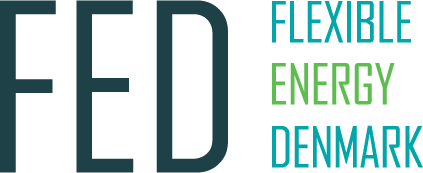Published 20. Jan. 2021
Open energy data: Data on electricity, water and heat consumption now pour into a data lake on a daily basis
Energy data will be the pivotal point in major parts of the green transition, and they constitute the core of the Flexible Energy Denmark (FED) project. Now, the cloud platform for managing FED data has become reality at Center Denmark. In addition, another milestone will be reached in the near future when the industrial partners in the FED project get access to utilizing anonymized energy data in their product development.
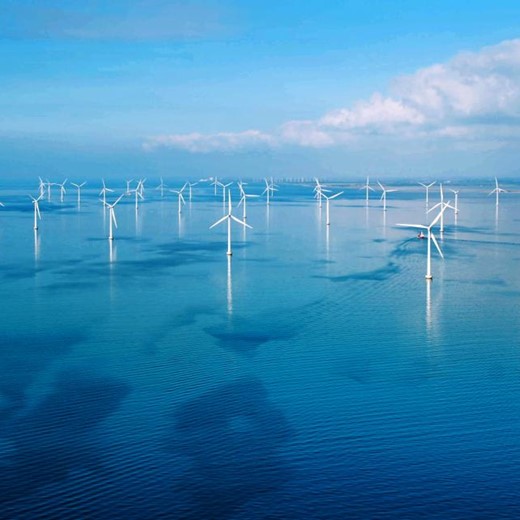
1-4 times a day, raw data on the consumption of electricity, water and district heating from thousands of households and indoor climate data from two elementary schools and 155 households in Aalborg land in a data lake controlled by the independent, non-profit national Danish research center Center Denmark in Fredericia.
After around a year’s preparations and adjustments, the cloud platform at Center Denmark was recently ready for the continuous reception of data. In a couple of months, the data lake will even open an intelligent “floodgate”, enabling the platform to deliver processed energy data – in other words, anonymized data that cannot be traced back to the consumers – to the partners in the Flexible Energy Denmark project (FED).
Knowledge on consumers’ energy consumption and indoor climate happen to be worth their weight in gold to supply companies, industry partners and researchers. They use data for planning their production and developing services and algorithms that can control energy consumption to make it more flexible and prevent the waste of sustainable energy.
With the data lake, Denmark now has a central, digital infrastructure that supports the green transition, which will be highly data-driven, explains Director of Center Denmark, Søren Skov Bording:
- Through data intelligence, we can utilize flexibility across energy sources, but in order to do this, we need real-time data, like those from the living labs in the FED project. Our ambition with the national platform is that it will provide the basis for the opening of data on electricity, water, heating and potentially also gas, ensuring that data can be utilized by commercial suppliers in the development of new business models that support data-driven models for the green transition.
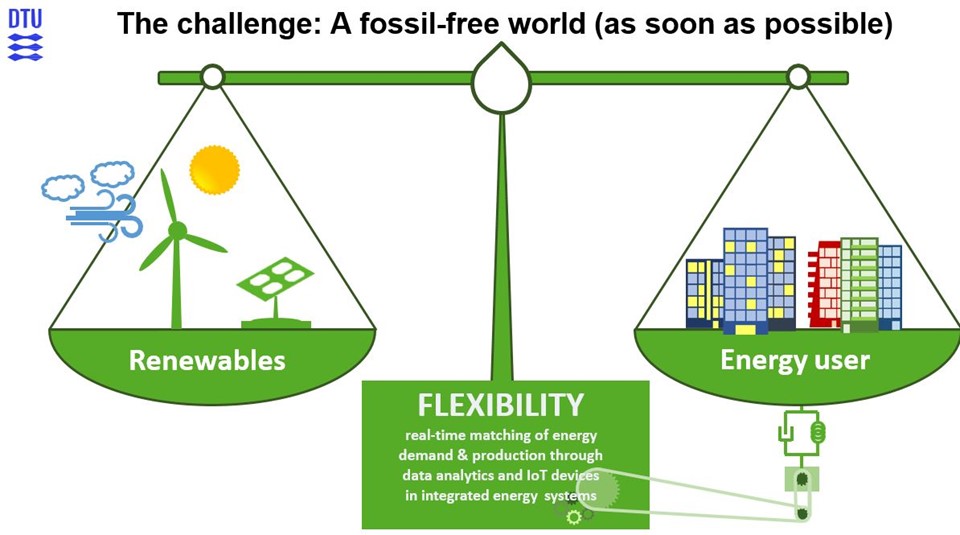
Trusted data sharing platform
The data in the data lake are gathered from the above-mentioned living labs; geographically defined areas in which researchers, supply companies and industry test their solutions on real-world challenges with real consumption data.
From the very first planning stages of the FED project, it was clear that there was a need for a cloud platform where the partners could store energy data from the living labs securely, and this is when the idea of a shared data lake arose. The major advantage is that Center Denmark has the responsibility for acquiring GDPR permissions and handling the security concerning the storage and anonymization of data, enabling data sharing among the partners.
- We use the term ‘trusted data sharing platform’. That is, a shared platform that handles the GDPR-related challenges and has complete control over who in each company has access to which data at which levels, Søren Skov Bording explains.
- Energy consumption can tell a lot about our behaviour, and such data are valuable to companies that provide services and marketing that are not in line with the green transition. The consumers need to be absolutely certain that their data are only used in connection with the green transition, and we can guarantee that with our data lake, the Center Denmark director says.
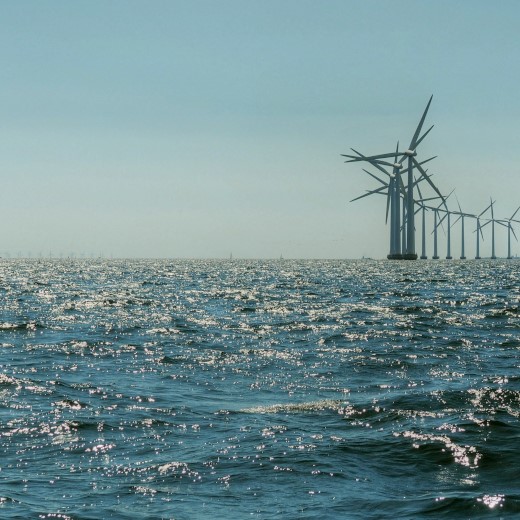
Data maps flexibility
Among other things, the green transition concerns creating a balanced energy system in a world that is increasingly electrified as we transition to sustainable energy and away from fossil fuels.
The transition costs huge amounts of money, but by analyzing energy data, it is possible to map points of flexibility in energy consumption, so that consumption can be shifted to a later point in time, in essence storing energy virtually.
Sometimes the wind is really strong, but if no consumers are ready to use the electricity, the wind farms are turned off. This is known as ‘special regulation’.
- It is a great shame to have production capacity at a standstill around the country instead of utilizing the energy. It would make much more sense to start consumption somewhere, so that we can use the energy when the CO2 footprint of our electricity is as low as possible, that is, is produced by sustainable energy sources. So it is a matter of shifting consumption in time and across energy sectors, Søren Skov Bording says.
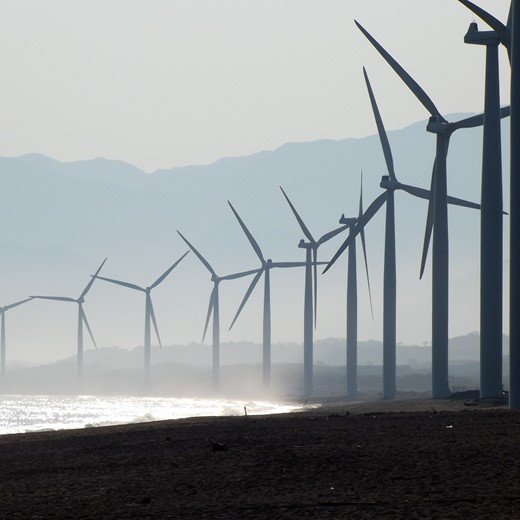
Business development through data
As an example, district heating companies can install large heat pumps and convert excess current produced by wind turbines to thermal heat. According to the Danish District Heating Association, energy can be stored for 4-5 hours in the pipes, for 4-5 days in holding tanks at the district heating stations and potentially for 4-5 months in novel pit thermal energy storage, ensuring that the excess current produced – transformed to heat – can be utilized far into the heating season.
- Similarly, we see flexibility potential in the energy that sewage treatment plants consume in their treatment processes or that water supply companies consume for pumping water up and out, as well as in Power2X and gas grids, all of which may function as virtual energy storages for the surplus production that sustainable energy generates, Søren Skov Bording says.
Finally, there is a huge potential in integrating flexibility in cold-storage warehouses and fridge-freezers in private households. In fact, fridge-freezers constitute an average of 16 percent of the electricity consumption of private households. So if we can control them to ensure that fridges and freezers do not cool down during the morning and afternoon (5PM-8PM) peak hours, we will have come a long way.
- Some services will require real-time data in order to be able to transmit control signals. Other services will utilize energy data to develop algorithms that regulate consumption in the home or in the district heating grid. No matter what, having access to storing and collecting energy data 24/7 from a secure cloud platform will be crucial, Søren Skov Bording says.
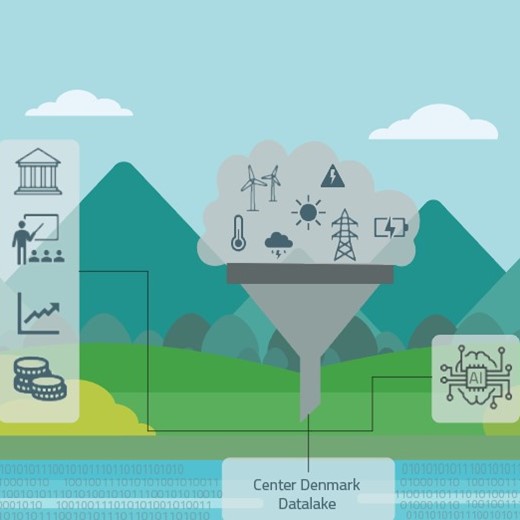
The Data Lake in Center Denmark
The Data Lake is a cloud platform for processing energy data in real time.
The digital infrastructure of the data lake is primarily developed in the FED project by researchers at Aalborg University, while the server has been built by researchers at DTU and is operated by DTU.
In addition to energy data from the FED project, Center Denmark’s Data Lake also contains data from two other digitalization projects: the district heating project Heat 4.0 and the data center project Cool-Data, both of which are funded by the Danish Innovation Fund, as are FED and Center Denmark.
In 2020, the EU Commission appointed Center Denmark a Digital Innovation Hub under Horizon 2020, and the Danish Business Authority has just recommended Center Denmark as a candidate for becoming European Hub for Smart Energy.
Six FED living labs send data to the data lake:
- Electricity consumption: KONSTANT and TREFOR. Aarhus Harbour has just joined KONSTANT’s Living Lab, from which energy data from companies will also be processed in the Center Denmark Data Lake.
- District heating data.
- Data on control of heating in, for now, two Novasol vacation houses with indoor swimming pools, 13 more houses to join.
- Indoor climate data from two elementary schools in Høje-Taastrup Municipality.
- Indoor climate data from 155 households at Ravnkildevej in the supply area of Aalborg Forsyning.
Read more about Center Denmark and the Data Lake at www.centerdenmark.com
